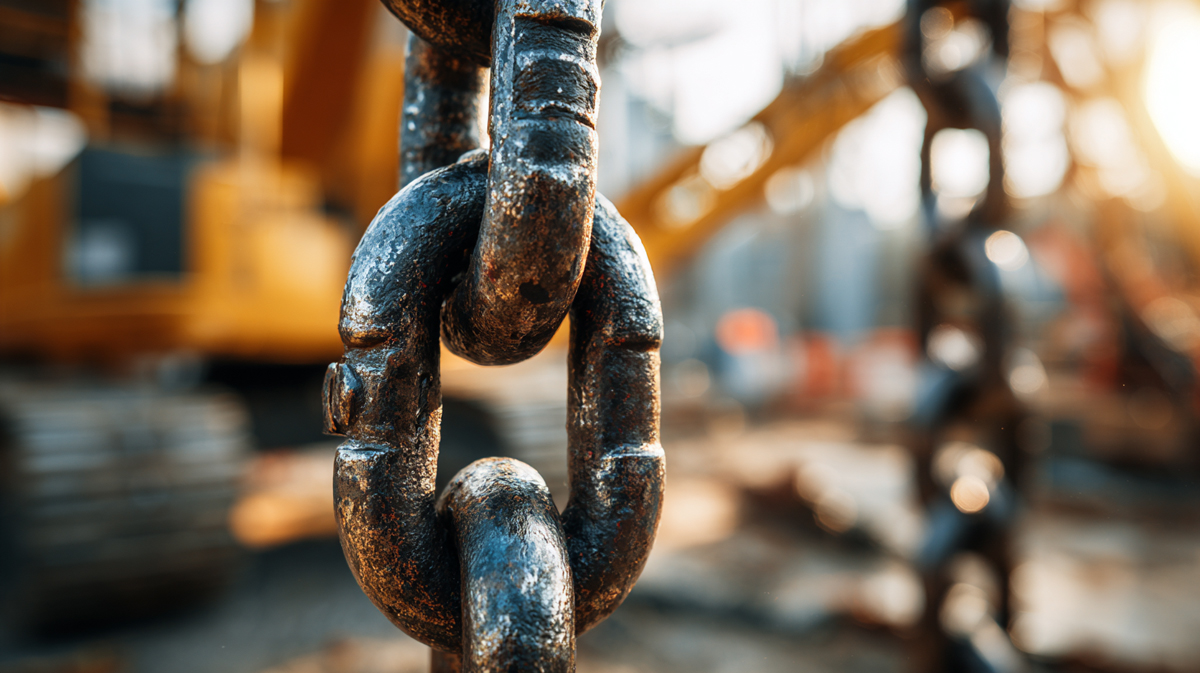The Overlooked Productivity Gains from Upgrading Your Lifting Gear

Lifting equipment and gear do come in quite handy for many industrial settings. But many businesses overlook lifting equipment upgrades and focus more on labour and software solutions. Budget also plays a role in businesses not equipping themselves with the right lifting gear, often relying on older products that can do more damage than good.
Upgrading to modern lifting gear will be worth the investment, as it will make your employees more productive, keep operations safer and help your business remain compliant.
The Hidden Costs of Outdated Lifting Gear
Outdated and inefficient lifting equipment can cause serious risks throughout all industries that use it. Construction, warehousing, logistics, automotive, agriculture – these are just some of the commercial and industrial sectors that rely on compliant lifting equipment. These businesses need to stay consistent with operations and productivity, and outdated lifting gear will quietly drain both productivity and profit.
Slow handling increases turnaround times, while worn or unreliable equipment raises the risk of accidents, leading to costly downtime and potential injury claims. The impact on finances doesn’t stop there; ongoing maintenance and repair costs can quickly outweigh the return on investment compared to upgrading to modern, compliant systems.
Using ageing lifting equipment may result in missed compliance opportunities under LOLER (Lifting Operations and Lifting Equipment Regulations) and PUWER (Provision and Use of Work Equipment Regulations). Regular inspections and timely replacement not only reduce long-term expenses but also safeguard operational efficiency and workplace safety.
Key Equipment Upgrades That Unlock Productivity
Which lifting equipment do you need to improve productivity, safety and stay compliant, as well as save money on maintenance? These are just some of the systems that many different industries use to lift goods, materials and products.
· Chain slings and lifting chains:
There are several different types of lifting chains and chain slings, and they will all have a maximum strength and lifting limit. Compared to alternatives like webbing slings, lifting chains are far stronger, with some grades able to support loads of up to 67 tonnes, and are more durable and suitable for harsh environments. This makes them highly versatile, which helps improve productivity for lots of different lifting requirements.
· Electric chain hoists:
Automation makes everything better, especially when it comes to lifting. Electric chain hoists are far quicker than pneumatic versions, which also require manual labour to operate. Going electric with a chain hoist reduces operator fatigue and is ideal for very repetitive lifting tasks. Precision and speed go hand in hand when using electric chain hoists, as many offer dual speed capabilities – a slower speed for fragile loads and precision positioning, and a faster one for regular use.
· Lifting clamps:
When we talk about lifting, moving materials vertically isn’t the only way it’s done. Enter lifting clamps, which come in several forms, including vertical, horizontal and rail handling. This lifting equipment means businesses can choose a perfectly suited clamp for specific applications, opening up opportunities for safer and faster lifting for awkward loads. Once locked in and gripping the application, the clamps are fully secure, which reduces the need for manual repositioning, saving time and effort.
· Other modern lifting gear:
In addition to these three key pieces of equipment, there are several other upgrades you can make to improve productivity. Modern lifting upgrades, such as forklift attachments, spreader beams and drum lifters, can dramatically improve workplace productivity and safety. Forklift attachments can turn a standard lift truck into a multi-purpose tool capable of managing pallets, drums or oversize items with ease. Spreader beams help distribute weight evenly, preventing damage to loads and allowing for safer lifts of bulky materials. Drum lifters make it faster and safer to move cylinders and barrels without manual effort.
By investing in modern, task-specific lifting equipment accessories, businesses can ensure precision, reduce risk and ensure compliance with safety standards, all while improving overall lifting speed and efficiency.
Safety & Compliance as Productivity Drivers
Safety and compliance are not just regulatory obligations; they are powerful drivers of productivity. Investing in safer, well-maintained lifting equipment reduces the risk of accidents, meaning fewer disruptions, lower injury-related costs and less unplanned downtime. Reliable and compliant machinery also helps maintain consistent workflows and keeps projects on schedule.
Adhering to UK safety standards such as LOLER and PUWER ensures that lifting operations meet legal requirements, avoiding costly penalties, failed inspections and project delays. Beyond compliance, a strong safety culture improves employee morale and confidence in the workplace. When staff feel protected and supported, efficiency increases.
Future-Proofing Your Operations with Smarter Lifting Gear
Upgrading to smarter, modern lifting gear delivers far more than just new equipment. Modern systems improve speed, safety and compliance while offering a stronger return on investment through reduced downtime and maintenance costs.
Now is the ideal time to review your current lifting equipment and assess whether it’s holding your performance and productivity back. Future-proofing your setup ensures smoother operations, safer working environments and long-term savings.










